any part of an organism such as an organ or extremity
the main part of an organ or other bodily structure
a needlelike part or structure of a plant or animal or crystal; as a spine or bristle or crystal
the bottom or lowest part
a projecting part where two sides or edges meet
the part of a continent that is stable and forms the central mass of the continent; typically Precambrian
a piece cut off from the main part of something
a piece broken off or cut off of something else
a large piece of something without definite shape
a small piece
one of the parts into which something naturally divides
a thin flat piece cut off of some object
a relatively long narrow piece of something
a part of the earth that can be considered separately
posterior part of the back of a domestic fowl
a part lying on the lower side or underneath an animal’s body
the back of a horse
the solid bony part of the tail of an animal as distinguished from the hair
one of the five areas on the undersurface of an echinoderm on which the tube feet are located
the highest part of the back at the base of the neck of various animals especially draft animals
lower part of the leg extending from the hock to the fetlock in hoofed mammals
either side of the backbone between the hipbone and the ribs in humans as well as quadrupeds
the part of an animal that corresponds to the human buttocks
lower part of a horse’s thigh between the hock and the stifle
the side between ribs and hipbone
part of an insect’s body that bears the wings and legs
one of a series of similar body segments into which some animals are divided longitudinally
(anatomy) a group of body parts that work together to perform a given function
accessory or adjoining anatomical parts or appendages to an organ (especially of the embryo)
a part of an animal that has a special function or is supplied by a given artery or nerve
a muscle or nerve that dilates or widens a body part
(anatomy) any furrow or channel on a bodily structure or part
(anatomy) a structure that separates areas in an organism
any body part visible externally
a particular complex anatomical part of a living thing
generally any arch shaped structure (but often it refers to the arched roof of an anatomical space)
a group of physiologically or anatomically related organs or parts
the dilated portion of a canal or duct especially of the semicircular canals of the ear
part of an organism consisting of an aggregate of cells having a similar structure and function
a projection below the mouth of certain mollusks that resembles a chin
a fully differentiated structural and functional unit in an animal that is specialized for some particular function
a bulging body part (as the belly of a muscle)
a biological unit consisting of a nucleus and the body of cytoplasm with which it interacts
one of the segments into which a myofibril is divided
a natural prolongation or projection from a part of an organism either animal or plant
(anatomy) a somewhat rounded subdivision of a bodily organ or part
the terminal section of the alimentary canal; from the sigmoid flexure to the anus
the part of the body between the neck and the upper arm
the body excluding the head and neck and limbs
the part of the human torso between the neck and the diaphragm or the corresponding part in other vertebrates
the middle region of the body of an arthropod between the head and the abdomen
either side of the body below the waist and above the thigh
the hip and buttock and upper thigh in human beings
the region of the body of a vertebrate between the thorax and the pelvis
the back of the body of a vertebrate or any analogous surface (as the upper or outer surface of an organ or appendage or part)
the posterior part of a human (or animal) body from the neck to the end of the spine
the slender part of the back
the fleshy part of the human body that you sit on
either of the two large fleshy masses of muscular tissue that form the human rump
the part of a limb or tooth that remains after the rest is removed
the part of the human leg between the knee and the ankle
the front part of the human leg between the knee and the ankle
forepart of a hoof
(anatomy) the point of connection between two bones or elements of a skeleton (especially if it allows motion)
the region of the hips and groin and lower abdomen
the characteristic parts of a person’s face: eyes and nose and mouth and chin
the remains of a body part that was functional at an earlier stage of life
a segment of a citrus fruit
a small fragment of something broken off from the whole
a fragment of brick used as a weapon
a fragment of incombustible matter left after a wood or coal or charcoal fire
(geology) a constituent fragment of a clastic rock
a hot fragment of wood or coal that is left from a fire and is glowing or smoldering
a fragment rubbed off by the use of a file
(mineralogy) a small rounded lump of mineral substance (usually harder than the surrounding rock or sediment)
a small nub (especially an undeveloped fruit or ear of corn)
a solid lump of a precious metal (especially gold) as found in the earth
a thin fragment or slice (especially of wood) that has been shaved from something
something that has been pruned off of a plant
the fragment of DNA that is produced by cleaving DNA with a restriction enzyme
a long continuous strip (usually running horizontally)
(usually plural) a fragment scraped off of something and collected
a very thin slice (of tissue or mineral or other substance) for examination under a microscope
a fragment broken off from the edge or face of stone or ore and having at least one thin edge
a small fragment of a burning substance thrown out by burning material or by friction
a segment of a stem between two nodes
Is there a single word that means: to like an aspect something larger, but to dislike the whole thing?
As an example, someone might say, «I’d like to be fit», meaning that they would genuinely like the benefits of being fit, but omitting the fact that the only thing stopping them from being fit is that they don’t like exercise. That is, they they would like to be fit if it didn’t involve exercise.
For simplicity, I’m going to use ‘half-like‘ as a place holder in a few more examples.
-
«I’d half-like to buy that new car», meaning «I’d like to buy that new car (if I could find it cheaper)».
-
«I’d half-like to be paid more», meaning «I’d like to be paid more (but I don’t want to work harder)».
-
«I’d half-like to learn a language», meaning «I’d like to learn a language (but there’s so much to watch on TV)».
-
«I’d half-like to retire», meaning «I’d like to retire (but I’d miss my colleagues)».
I’d prefer a non-judgemental term but any single word that has this meaning would be appreciated, even a word in another language.
As per comments, in spoken English, this can be expressed using stresses and pauses.
- «I would like to buy that car …», meaning the same as the above; the stress serving to draw attention to the implicit «but».
Also as per comments (thank you all), this can be expressed by adding a few extra words, for example «quite like», or «like the idea of …», or by making explicit the overriding «but …».
I’m coming to suspect that there may not be a single word that captures what I want, but that there might be several single words that capture different variations of what I want.
In the above samples, if the speaker is aware of the conflict between what they want and what they don’t want, then as per Jason and user888379, they could say «I’m ambivalent about …» or «I’m conflicted about …», and especially so if the desires are closely balanced.
But if the person doesn’t accept the conflict, then those constructs don’t work as well.
To rework the previous examples:
- «He half-wants to be fit.»
- «He’d half-like to buy that new car.»
- «He half-wants to be paid more.»
- «He half-wants to learn a language.»
- «He’d half-like to retire»
«Dreams of» might work, though it doesn’t distinguish between «can’t» and «could but won’t». «Dreams of» could even be used for a person who is working towards a goal, which isn’t the intent I want to convey.
«likes the idea of» could work too, though it isn’t perfect either. It doesn’t distinguish between a weak inclination towards something and a strong inclination countered by an even stronger disinclination.
«deluded», «denial» or more kindly, «unaware» are all potentially applicable, but they would describe the person themselves, rather than their half-want for something.
You could use «unrealistically wants», but it would be a clumsy construction, and perhaps imply an impossible desire, rather than one that would be possible, if the person wanted it a bit more.
«Supposedly wants» is maybe a better expression of this key concept I want to capture: the difference between ‘expressed opinion’ and ‘observed behaviour’, the «he’s just not that into you» factor, a word to describe someone complaining that they want something that is actually within their power to have, if they really wanted it as badly as they claim to want it.
-
The object of semasiology.
Two approaches to the study of meaning. -
Types of meaning.
-
Meaning and motivation.
3.1.
The branch of lexicology which studies meaning is called
«semasiology«.
Sometimes the term «semantics»
is used as a synonym to semasiology, but it is ambiguous as it can
stand as well for (1)
the expressive aspect of language in general and (2)
the meaning of one particular word.
Meaning
is certainly the most important property of the word but what is
«meaning»?
Meaning
is one of the most controversial terms in lexicology. At present
there is no generally accepted definition of meaning. Prof.
Smirnitsky defines meaning as «a certain reflection in the mind
of objects, phenomena or relations that makes part of the linguistic
sign, its so-called inner facet, whereas the sound form functions as
its outer facet». Generally speaking, meaning can be described
as a component of the word through which a concept is communicated,
enabling the word to denote objects in the real world.
There are
two
approaches
to the study of meaning: the
referential approach
and the
functional approach.
The former tries to define meaning in terms of relations between the
word (sound form), concept (notion, thought) and referent (object
which the word denotes). They are closely connected and the
relationship between them is represented by «the semiotic
triangle» ( = the basic triangle) of Ogden and Richards (in the
book «The Meaning of Meaning» (1923) by O.K. Ogden and I.A.
Richards).

symbol
referent
(sound form)
This view denies a direct link
between words and things, arguing that the relationship can be made
only through the use of our minds. Meaning is related to a sound
form, concept and referent but not identical with them: meaning is a
linguistic phenomenon while neither concept nor referent is.
The
main criticism of this approach is the difficulty of identifying
«concepts»: they are mental phenomena and purely
subjective, existing
in the minds of individuals. The strongest point of this approach is
that it connects meaning and the process of nomination.
The functional approach to
meaning is less concerned with what meaning is than with how it
works. It is argued, to say that «words have meanings»
means only that they are used in a certain way in a sentence. There
is no meaning beyond that. Ludwig Wittgenstein (1889-1951), in
particular, stressed the importance of this approach in his dictum:
«The meaning of the word is its use in the language». So
meaning is studied by making detailed analyses of the way words are
used in contexts, through their relations to other words in speech,
and not through their relations to concepts or referents.
Actually,
the functional approach is basically confined to the analysis of
sameness or difference of meaning. For example, we can say that in
«take
the bottle»
and «take
to the
bottle»
take
has different meaning as it is used differently, but it does not
explain what the meaning of the verb is. So the functional approach
should
be used not as the theoretical basis for the study of meaning, but
only as complementary to the referential approach.
3.2.
Word meaning is made up of different components, commonly known
as types
of meaning.
The two main types of meaning are grammatical
meaning and
lexical meaning.
Grammatical
meaning
belongs to sets of word-forms and is common to
all words of the given part of speech,
e.g.
girls,
boys, classes, children, mice
express the meaning of
«plurality».
Lexical
meaning
belongs to an individual word in all its forms. It
comprises several components. The two main ones are the
denotational
component and
the connotational component.
The
denotational (
=
denotative)
component,
also called «referential
meaning» or «cognitive meaning», expresses the
conceptual (notional)
content of a word; broadly, it is some information, or knowledge,
of the real-world object that the word denotes.
Basically, this is the component that makes communication possible.
e.g.
notorious
«widely-known»,
celebrated «known
widely».
The
connotational (connotative) component
expresses the attitude of
the speaker to what he is saying, to the object denoted by the word.
This component consists of emotive
connotation and
evaluative connotation.
1) Emotive
connotation
( = «affective meaning», or an emotive charge),
e.g.
In «a
single tree»
single states that there is only one tree,
but
«a
lonely tree»
besides giving the same information, also renders
(conveys) the feeling of sadness.
We
shouldn’t confuse emotive connotations and emotive denotative
meanings
in which some emotion is named, e.g. horror,
love, fear, etc.
2) Evaluative
connotation
labels
the referent as «good» or «bad»,
e.g.
notorious
has a negative evaluative connotation, while
celebrated
a positive one. Cf.: a
notorious criminal/liar/ coward,
etc.
and a
celebrated singer/ scholar/ artist, etc.
It
should be noted that emotive and evaluative connotations are not
individual, they are common to all speakers of the language. But
emotive implications are individual (or common to a group of
speakers),
subjective, depend on personal experience.
e.g.
The word «hospital»
may evoke all kinds of emotions in
different
people (an
architect, a doctor, an invalid, etc.)
Stylistic
connotation,
or stylistic reference, another component of word meaning, stands
somewhat apart from emotive and evaluative connotations. Indeed, it
does not characterize a referent, but rather states how a word should
be used by referring it to a certain functional style of the language
peculiar to a specific sphere of communication. It shows in what
social context, in what communicative situations the word can be
used.
Stylistically,
words can be roughly classified into literary,
or formal
(e.g.
commence, discharge, parent),
neutral
(e.g.
father, begin, dismiss)
and non-literary,
or informal
(e.g.
dad, sack, set off).
3.3.
The term «motivation»
is used to denote the relationship between the
form of the word, i.e. its sound form, morphemic composition and
structural pattern, and its meaning.
There
are three
main types of motivation:
phonetic,
morphological
and
semantic.
1)
Phonetic
motivation
is a direct connection between the sound form
of a word and its meaning. There are two types of phonetic
motivation: sound
imitation and
sound symbolism.
a) Sound
imitation, or
onomatopoeia:
phonetically motivated words are
a direct imitation of the sounds they denote (or the sounds produced
by actions or objects they denote),
e.g.
buzz,
swish, bang, thud, cuckoo.
b) Sound
symbolism.
It’s argued by some linguists that the sounds that make up a word may
reflect or symbolise the properties of the object which the word
refers
to, i.e. they may suggest size, shape, speed, colour, etc.
e.g.
back
vowels
suggest big size, heavy weight, dark colour, front
vowels
suggest lightness, smallness, etc.
Many
words beginning with sl-
are slippery in some way: slide,
slip, slither, sludge,
etc.
or pejorative: slut,
slattern, sly, sloppy, slovenly;
words that end in -ump
almost
all refer to some kind of roundish mass: plump,
chump,
rump, hump, stump.
Certainly, not every word with
these phonetic characteristics will have the meaning suggested. This
is, perhaps, one of the reasons why sound symbolism is not
universally recognized in linguistics.
2) Morphological
motivation
is
a direct connection between the lexical meaning of the component
morphemes, the pattern of their arrangement and the meaning of the
word.
Morphologically motivated
words are those whose meaning is determined by the meaning of their
components,
e.g.
re-write
«write
again»,
ex-wife «former
wife».
The degree
of morphological motivation may be different. Words may be
fully
motivated
(then they are transparent), partially
motivated
and
non-motivated
(idiomatic, or opaque).
a)
If the meaning of the word is determined by the meaning of the
components
and the structural pattern, it is fully
motivated:
e.g. hatless.
b)
If the connection between the morphemic composition of a word and
its meaning is arbitrary, the word is non-motivated,
e.g. buttercup
«yellow-flowered plant».
c)
In hammer
-er
shows that it is an instrument, but what is «hamming«?
«Ham»
has no lexical meaning in this word, thus the word is partially
motivated.
Cf. also cranberry.
Motivation may be lost in the
course of time,
e.g.
in OE wīfman
was
motivated morphologically: wīf
+ man «wife
of a man»; now it is opaque;
its motivation is said to be faded (woman).
3) Semantic
motivation
is based on co-existence of direct and figurative
meanings of the same word,
e.g.
butterfly
–
1) insect; 2) showy and
frivolous person.( = metaphorical extension of the direct meaning).
Соседние файлы в предмете [НЕСОРТИРОВАННОЕ]
- #
- #
- #
- #
- #
- #
- #
- #
- #
- #
- #
From Longman Dictionary of Contemporary Englishpart of somethingpart of somethingsome, but not all, of a particular thing
Part of the money will be spent on a new playground.
Part of the castle was destroyed by fire.
For part of the day, you will be outside doing practical work.part of me/him etc
Part of me hates him (=I partly hate him).(only) part of the story/problem/explanation etc
Poor working conditions are only part of the problem. ► Don’t say ‘(the) most part of’. Say most of: We spent most of (NOT most part of) the morning shopping. → partExamples from the Corpuspart of me/him etc• No, he would not hurt her, and now she wanted to be him, to be part of him.• We’ve all grown up, but part of me is still curious about why girls want to be cheerleaders.• My hand was no longer part of me.• One part of me was contemptuous of the scribblers continually rescuing the world with their paper prescriptions.• Some part of him missed the big storm, had loved it, was waiting for its return.• The part of me which friendship and society claim must wait, or perish in waiting.
Presentation on theme: «Word Meaning Lecture # 6 Grigoryeva M.. Word Meaning Approaches to word meaning Meaning and Notion (понятие) Types of word meaning Types of morpheme meaning.»— Presentation transcript:
1
Word Meaning Lecture # 6 Grigoryeva M.
2
Word Meaning Approaches to word meaning Meaning and Notion (понятие) Types of word meaning Types of morpheme meaning Motivation
3
Each word has two aspects: the outer aspect ( its sound form) cat the inner aspect (its meaning) long-legged, fury animal with sharp teeth
4
Sound and meaning do not always constitute a constant unit even in the same language EX a temple a part of a human head a large church
5
Semantics (Semasiology) Is a branch of lexicology which studies the meaning of words and word equivalents
6
Approaches to Word Meaning The Referential (analytical) approach The Functional (contextual) approach Operational (information-oriented) approach
7
The Referential (analytical) approach formulates the essence of meaning by establishing the interdependence between words and things or concepts they denote distinguishes between three components closely connected with meaning: the sound-form of the linguistic sign, the concept the actual referent
8
Basic Triangle concept (thought, reference) – the thought of the object that singles out its essential features referent – object denoted by the word, part of reality sound-form (symbol, sign) – linguistic sign concept – flower sound-form referent [rәuz]
9
Meaning and Sound-form are not identical different EX. dove — [d Λ v] English sound-forms [golub’] Russian convey one [taube] German and the same me aning
10
Meaning and Sound-form nearly identical sound-forms have different meanings in different languages EX. [kot] English – a small bed for a child [kot] Russian – a male cat identical sound-forms have different meanings (homonyms) EX. knight [nait] night [nait]
11
Meaning and Sound-form even considerable changes in sound-form do not affect the meaning EX Old English lufian [luvian] – love [l Λ v]
12
Meaning and Concept concept is a category of human cognition concept is abstract and reflects the most common and typical features of different objects and phenomena in the world concept is almost the same for the whole humanity in one and the same period of its historical development meanings of words are different in different languages
13
Meaning and Concept identical concepts may have different semantic structures in different languages EX. concept “a building for human habitation” – English Russian HOUSE ДОМ + in Russian ДОМ “fixed residence of family or household In English HOME
14
Meaning and Referent one and the same object (referent) may be denoted by more than one word of a different meaning cat pussy animal tiger
15
Functional Approach studies the functions of a word in speech meaning of a word is studied through relations of it with other linguistic units EX. to move (we move, move a chair) movement (movement of smth, slow movement) The distriution ( the position of the word in relation to others) of the verb to move and a noun movement is different as they belong to different classes of words and their meanings are different
16
Operational approach is centered on defining meaning through its role in the process of communication EX John came at 6 Beside the direct meaning the sentence may imply that: He was late He failed to keep his promise He was punctual as usual He came but he didn’t want to The implication depends on the concrete situation
17
Lexical Meaning and Notion Notion denotes the reflection in the mind of real objects Notion is a unit of thinking Lexical meaning is the realization of a notion by means of a definite language system Word is a language unit
18
Lexical Meaning and Notion Notions are international especially with the nations of the same cultural level Meanings are nationally limited EX GO (E) —- ИДТИ(R) “To move” BUT !!! To GO by bus (E) ЕХАТЬ (R) EX Man -мужчина, человек Она – хороший человек (R) She is a good person (E)
19
Types of Meaning types of meaning grammatical meaning lexico-grammatical meaning lexical meaning denotationa l connotational
20
Grammatical Meaning component of meaning recurrent in identical sets of individual forms of different words EX. girls, winters, toys, tables – grammatical meaning of plurality asked, thought, walked – meaning of past tense
21
Lexico-grammatical meaning (part –of- speech meaning) is revealed in the classification of lexical items into major word classes (N, V, Adj, Adv) and minor ones (artc, prep, conj) words of one lexico-grammatical class have the same paradigm
22
Lexical Meaning is the meaning proper to the given linguistic unit in all its forms and distributions EX. Go – goes — went lexical meaning – process of movement
23
Aspects of Lexical meaning The denotational aspect The connotational aspect The pragmatic aspect
24
Denotational Meaning “denote” – to be a sign of, stand as a symbol for” establishes the correlation between the name and the object makes communication possible EX booklet “a small thin book that gives info about smth”
25
Connotational Meaning reflects the attitude of the speaker towards what he speaks about it is optional – a word either has it or not Connotation includes: The emotive charge EX Daddy (for father) Intensity EX to adore (for to love) Imagery EX to wade “to walk with an effort” to wade through a book
26
The pragmatic aspect associations concern the situation in which the word is uttered, the social circumstances (formal, informal, etc.), social relationships between the interlocutors (polite, rough, etc.), t the type and purpose of communication (poetic, official, etc.) EX horse (neutral) steed (poetic) nag (slang) gee-gee (baby language)
27
Types of Morpheme Meaning lexical differential functional distributional
28
Lexical Meaning in Morphemes root-morphemes that are homonymous to words possess lexical meaning EX. boy – boyhood – boyish affixes have lexical meaning of a more generalized character EX. –er “agent, doer of an action”
29
Lexical Meaning in Morphemes has denotational and connotational components EX. –ly, -like, -ish – denotational meaning of similiarity womanly, womanlike, womanish connotational component – -ly (positive evaluation), -ish (deragotary) женственный — женоподобный
30
Differential Meaning a semantic component that serves to distinguish one word from all others containing identical morphemes EX. cranberry, blackberry, gooseberry
31
Functional Meaning found only in derivational affixes a semantic component which serves to refer the word to the certain part of speech EX. just, adj. – justice, n.
32
Distributional Meaning the meaning of the order and the arrangement of morphemes making up the word found in words containing more than one morpheme different arrangement of the same morphemes would make the word meaningless EX. sing- + -er =singer, -er + sing- = ?
33
Motivation denotes the relationship between the phonetic or morphemic composition and structural pattern of the word on the one hand, and its meaning on the other can be phonetical morphological semantic
34
Phonetical Motivation when there is a certain similarity between the sounds that make up the word and those produced by animals, objects, etc. EX. sizzle, boom, splash, cuckoo
35
Morphological Motivation when there is a direct connection between the structure of a word and its meaning EX. finger-ring – ring-finger, A direct connection between the lexical meaning of the component morphemes EX think –rethink “thinking again”
36
Semantic Motivation based on co-existence of direct and figurative meanings of the same word EX a watchdog – ”a dog kept for watching property” a watchdog – “a watchful human guardian” (semantic motivation)
Скачать материал

Скачать материал




- Сейчас обучается 268 человек из 64 регионов


- Сейчас обучается 396 человек из 63 регионов


Описание презентации по отдельным слайдам:
-
1 слайд
Word Meaning
Lecture # 6
Grigoryeva M. -
2 слайд
Word Meaning
Approaches to word meaning
Meaning and Notion (понятие)
Types of word meaning
Types of morpheme meaning
Motivation
-
3 слайд
Each word has two aspects:
the outer aspect
( its sound form)
catthe inner aspect
(its meaning)
long-legged, fury animal with sharp teeth
and claws -
4 слайд
Sound and meaning do not always constitute a constant unit even in the same language
EX a temple
a part of a human head
a large church -
5 слайд
Semantics (Semasiology)
Is a branch of lexicology which studies the
meaning of words and word equivalents -
6 слайд
Approaches to Word Meaning
The Referential (analytical) approachThe Functional (contextual) approach
Operational (information-oriented) approach
-
7 слайд
The Referential (analytical) approach
formulates the essence of meaning by establishing the interdependence between words and things or concepts they denotedistinguishes between three components closely connected with meaning:
the sound-form of the linguistic sign,
the concept
the actual referent -
8 слайд
Basic Triangle
concept (thought, reference) – the thought of the object that singles out its essential features
referent – object denoted by the word, part of reality
sound-form (symbol, sign) – linguistic sign
concept – flowersound-form referent
[rәuz] -
9 слайд
In what way does meaning correlate with
each element of the triangle ?In what relation does meaning stand to
each of them? -
10 слайд
Meaning and Sound-form
are not identical
different
EX. dove — [dΛv] English sound-forms
[golub’] Russian BUT
[taube] German
the same meaning -
11 слайд
Meaning and Sound-form
nearly identical sound-forms have different meanings in different languages
EX. [kot] Russian – a male cat
[kot] English – a small bed for a childidentical sound-forms have different meanings (‘homonyms)
EX. knight [nait]
night [nait] -
12 слайд
Meaning and Sound-form
even considerable changes in sound-form do not affect the meaningEX Old English lufian [luvian] – love [l Λ v]
-
13 слайд
Meaning and Concept
concept is a category of human cognitionconcept is abstract and reflects the most common and typical features of different objects and phenomena in the world
meanings of words are different in different languages
-
14 слайд
Meaning and Concept
identical concepts may have different semantic structures in different languagesEX. concept “a building for human habitation” –
English Russian
HOUSE ДОМ+ in Russian ДОМ
“fixed residence of family or household”
In English HOME -
15 слайд
Meaning and Referent
one and the same object (referent) may be denoted by more than one word of a different meaning
cat
pussy
animal
tiger -
16 слайд
Meaning
is not identical with any of the three points of the triangle –
the sound form,
the concept
the referentBUT
is closely connected with them. -
17 слайд
Functional Approach
studies the functions of a word in speech
meaning of a word is studied through relations of it with other linguistic units
EX. to move (we move, move a chair)
movement (movement of smth, slow movement)The distriution ( the position of the word in relation to
others) of the verb to move and a noun movement is
different as they belong to different classes of words and
their meanings are different -
18 слайд
Operational approach
is centered on defining meaning through its role in
the process of communicationEX John came at 6
Beside the direct meaning the sentence may imply that:
He was late
He failed to keep his promise
He was punctual as usual
He came but he didn’t want toThe implication depends on the concrete situation
-
19 слайд
Lexical Meaning and Notion
Notion denotes the reflection in the mind of real objectsNotion is a unit of thinking
Lexical meaning is the realization of a notion by means of a definite language system
Word is a language unit -
20 слайд
Lexical Meaning and Notion
Notions are international especially with the nations of the same cultural levelMeanings are nationally limited
EX GO (E) —- ИДТИ(R)
“To move”
BUT !!!
To GO by bus (E)
ЕХАТЬ (R)EX Man -мужчина, человек
Она – хороший человек (R)
She is a good person (E) -
21 слайд
Types of Meaning
Types of meaninggrammatical
meaninglexico-grammatical
meaning
lexical meaning
denotational
connotational -
22 слайд
Grammatical Meaning
component of meaning recurrent in identical sets of individual forms of different wordsEX. girls, winters, toys, tables –
grammatical meaning of pluralityasked, thought, walked –
meaning of past tense -
23 слайд
Lexico-grammatical meaning
(part –of- speech meaning)
is revealed in the classification of lexical items into:
major word classes (N, V, Adj, Adv)
minor ones (artc, prep, conj)words of one lexico-grammatical class have the same paradigm
-
24 слайд
Lexical Meaning
is the meaning proper to the given linguistic unit in all its forms and distributionsEX . Go – goes — went
lexical meaning – process of movement -
25 слайд
PRACTICE
Group the words into 3 column according to the grammatical, lexical or part-of –speech meaning
Boy’s, nearest, at, beautiful,
think, man, drift, wrote,
tremendous, ship’s, the most beautiful,
table, near, for, went, friend’s,
handsome, thinking, boy,
nearer, thought, boys,
lamp, go, during. -
26 слайд
Grammatical
The case of nouns: boy’s, ship’s, friend’s
The degree of comparison of adj: nearest, the most beautiful
The tense of verbs: wrote, went, thoughtLexical
Think, thinking, thought
Went, go
Boy’s, boy, boys
Nearest, near, nearer
At, for, during (“time”)
Beautiful, the most beautifulPart-of-speech
Nouns—verbs—adj—-prep -
27 слайд
Aspects of Lexical meaning
The denotational aspectThe connotational aspect
The pragmatic aspect
-
28 слайд
Denotational Meaning
“denote” – to be a sign of, stand as a symbol for”establishes the correlation between the name and the object
makes communication possibleEX booklet
“a small thin book that gives info about smth” -
29 слайд
PRACTICE
Explain denotational meaningA lion-hunter
To have a heart like a lion
To feel like a lion
To roar like a lion
To be thrown to the lions
The lion’s share
To put your head in lion’s mouth -
30 слайд
PRACTICE
A lion-hunter
A host that seeks out celebrities to impress guests
To have a heart like a lion
To have great courage
To feel like a lion
To be in the best of health
To roar like a lion
To shout very loudly
To be thrown to the lions
To be criticized strongly or treated badly
The lion’s share
Much more than one’s share
To put your head in lion’s mouth -
31 слайд
Connotational Meaning
reflects the attitude of the speaker towards what he speaks about
it is optional – a word either has it or notConnotation gives additional information and includes:
The emotive charge EX Daddy (for father)
Intensity EX to adore (for to love)
Imagery EX to wade through a book
“ to walk with an effort” -
32 слайд
PRACTICE
Give possible interpretation of the sentencesShe failed to buy it and felt a strange pang.
Don’t be afraid of that woman! It’s just barking!
He got up from his chair moving slowly, like an old man.
The girl went to her father and pulled his sleeve.
He was longing to begin to be generous.
She was a woman with shiny red hands and work-swollen finger knuckles. -
33 слайд
PRACTICE
Give possible interpretation of the sentences
She failed to buy it and felt a strange pang.
(pain—dissatisfaction that makes her suffer)
Don’t be afraid of that woman! It’s just barking!
(make loud sharp sound—-the behavior that implies that the person is frightened)
He got up from his chair moving slowly, like an old man.
(to go at slow speed—was suffering or was ill)
The girl went to her father and pulled his sleeve.
(to move smth towards oneself— to try to attract smb’s attention)
He was longing to begin to be generous.
(to start doing— hadn’t been generous before)
She was a woman with shiny red hands and work-swollen finger knuckles.
(colour— a labourer involved into physical work ,constant contact with water) -
34 слайд
The pragmatic aspect of lexical meaning
the situation in which the word is uttered,
the social circumstances (formal, informal, etc.),
social relationships between the interlocutors (polite, rough, etc.),
the type and purpose of communication (poetic, official, etc.)EX horse (neutral)
steed (poetic)
nag (slang)
gee-gee (baby language) -
35 слайд
PRACTICE
State what image underline the meaningI heard what she said but it didn’t sink into my mind.
You should be ashamed of yourself, crawling to the director like that.
They seized on the idea.
Bill, chasing some skirt again?
I saw him dive into a small pub.
Why are you trying to pin the blame on me?
He only married her for her dough. -
36 слайд
PRACTICE
State what image underline the meaning
I heard what she said but it didn’t sink into my mind.
(to understand completely)
You should be ashamed of yourself, crawling to the director like that.
(to behave humbly in order to win favour)
They seized on the idea.
(to be eager to take and use)
Bill, chasing some skirt again?
(a girl)
I saw him dive into a small pub.
(to enter suddenly)
Why are you trying to pin the blame on me?
(to blame smb unfairly)
He only married her for her dough.
(money) -
37 слайд
Types of Morpheme Meaning
lexical
differential
functional
distributional -
38 слайд
Lexical Meaning in Morphemes
root-morphemes that are homonymous to words possess lexical meaning
EX. boy – boyhood – boyishaffixes have lexical meaning of a more generalized character
EX. –er “agent, doer of an action” -
39 слайд
Lexical Meaning in Morphemes
has denotational and connotational components
EX. –ly, -like, -ish –
denotational meaning of similiarity
womanly , womanishconnotational component –
-ly (positive evaluation), -ish (deragotary) женственный — женоподобный -
40 слайд
Differential Meaning
a semantic component that serves to distinguish one word from all others containing identical morphemesEX. cranberry, blackberry, gooseberry
-
41 слайд
Functional Meaning
found only in derivational affixes
a semantic component which serves to
refer the word to the certain part of speechEX. just, adj. – justice, n.
-
42 слайд
Distributional Meaning
the meaning of the order and the arrangement of morphemes making up the word
found in words containing more than one morpheme
different arrangement of the same morphemes would make the word meaningless
EX. sing- + -er =singer,
-er + sing- = ? -
43 слайд
Motivation
denotes the relationship between the phonetic or morphemic composition and structural pattern of the word on the one hand, and its meaning on the othercan be phonetical
morphological
semantic -
44 слайд
Phonetical Motivation
when there is a certain similarity between the sounds that make up the word and those produced by animals, objects, etc.EX. sizzle, boom, splash, cuckoo
-
45 слайд
Morphological Motivation
when there is a direct connection between the structure of a word and its meaning
EX. finger-ring – ring-finger,A direct connection between the lexical meaning of the component morphemes
EX think –rethink “thinking again” -
46 слайд
Semantic Motivation
based on co-existence of direct and figurative meanings of the same wordEX a watchdog –
”a dog kept for watching property”a watchdog –
“a watchful human guardian” (semantic motivation) -
-
48 слайд
Analyze the meaning of the words.
Define the type of motivation
a) morphologically motivated
b) semantically motivatedDriver
Leg
Horse
Wall
Hand-made
Careless
piggish -
49 слайд
Analyze the meaning of the words.
Define the type of motivation
a) morphologically motivated
b) semantically motivated
Driver
Someone who drives a vehicle
morphologically motivated
Leg
The part of a piece of furniture such as a table
semantically motivated
Horse
A piece of equipment shaped like a box, used in gymnastics
semantically motivated -
50 слайд
Wall
Emotions or behavior preventing people from feeling close
semantically motivated
Hand-made
Made by hand, not machine
morphologically motivated
Careless
Not taking enough care
morphologically motivated
Piggish
Selfish
semantically motivated -
51 слайд
I heard what she said but it didn’t sink in my mind
“do down to the bottom”
‘to be accepted by mind” semantic motivationWhy are you trying to pin the blame on me?
“fasten smth somewhere using a pin” –
”to blame smb” semantic motivationI was following the man when he dived into a pub.
“jump into deep water” –
”to enter into suddenly” semantic motivationYou should be ashamed of yourself, crawling to the director like that
“to move along on hands and knees close to the ground” –
“to behave very humbly in order to win favor” semantic motivation
Найдите материал к любому уроку, указав свой предмет (категорию), класс, учебник и тему:
6 210 150 материалов в базе
- Выберите категорию:
- Выберите учебник и тему
- Выберите класс:
-
Тип материала:
-
Все материалы
-
Статьи
-
Научные работы
-
Видеоуроки
-
Презентации
-
Конспекты
-
Тесты
-
Рабочие программы
-
Другие методич. материалы
-
Найти материалы
Другие материалы
- 22.10.2020
- 141
- 0
- 21.09.2020
- 530
- 1
- 18.09.2020
- 256
- 0
- 11.09.2020
- 191
- 1
- 21.08.2020
- 197
- 0
- 18.08.2020
- 123
- 0
- 03.07.2020
- 94
- 0
- 06.06.2020
- 73
- 0
Вам будут интересны эти курсы:
-
Курс повышения квалификации «Формирование компетенций межкультурной коммуникации в условиях реализации ФГОС»
-
Курс профессиональной переподготовки «Клиническая психология: теория и методика преподавания в образовательной организации»
-
Курс повышения квалификации «Введение в сетевые технологии»
-
Курс повышения квалификации «История и философия науки в условиях реализации ФГОС ВО»
-
Курс повышения квалификации «Основы построения коммуникаций в организации»
-
Курс повышения квалификации «Организация практики студентов в соответствии с требованиями ФГОС медицинских направлений подготовки»
-
Курс повышения квалификации «Правовое регулирование рекламной и PR-деятельности»
-
Курс повышения квалификации «Организация маркетинга в туризме»
-
Курс повышения квалификации «Источники финансов»
-
Курс профессиональной переподготовки «Техническая диагностика и контроль технического состояния автотранспортных средств»
-
Курс профессиональной переподготовки «Осуществление и координация продаж»
-
Курс профессиональной переподготовки «Технический контроль и техническая подготовка сварочного процесса»
-
Курс профессиональной переподготовки «Управление качеством»
- Размер: 250 Кб
- Количество слайдов: 17
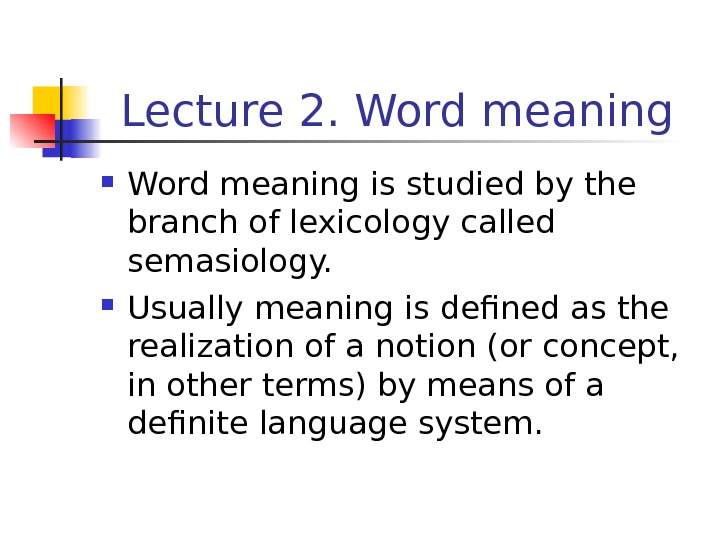
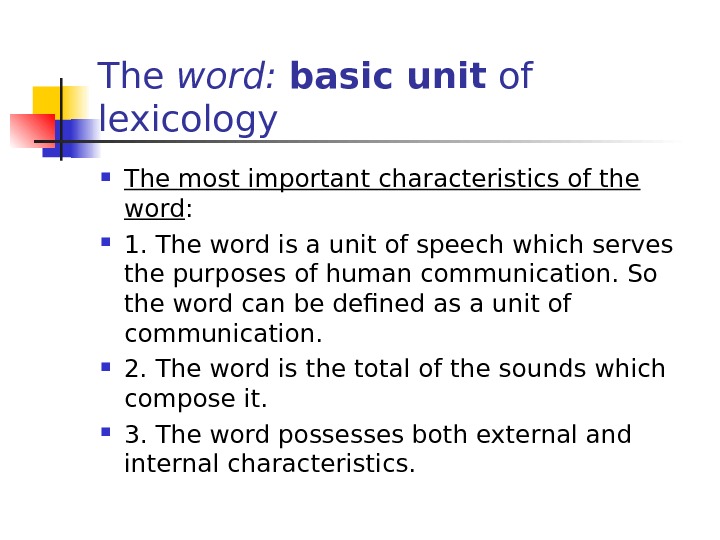
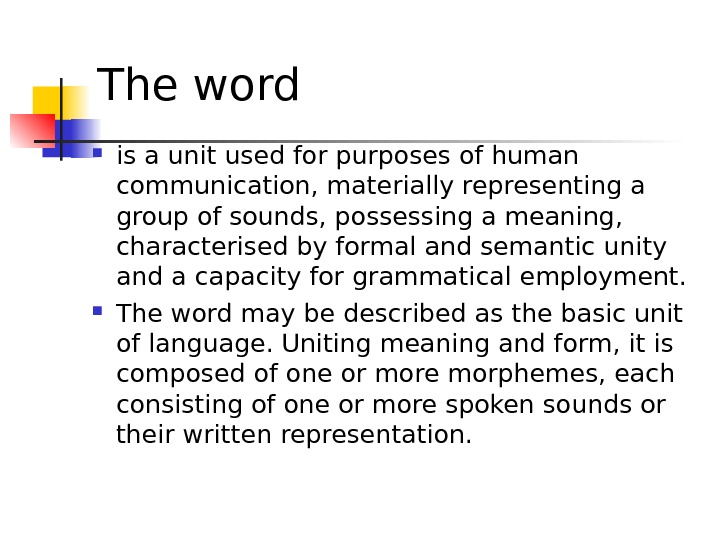
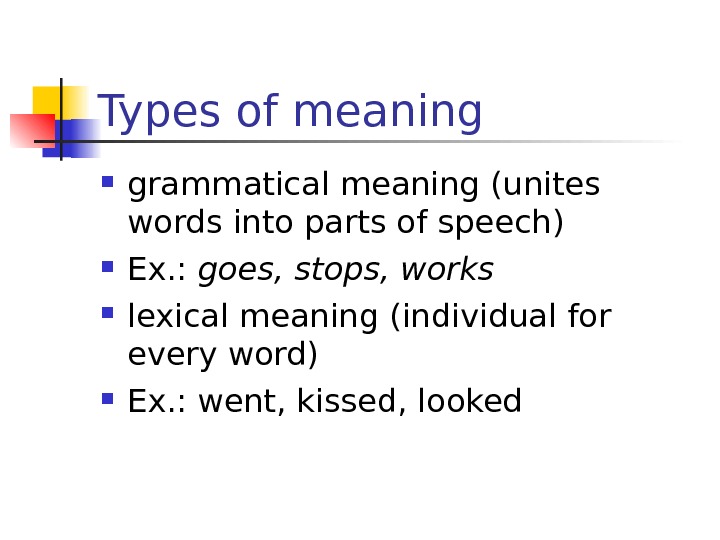
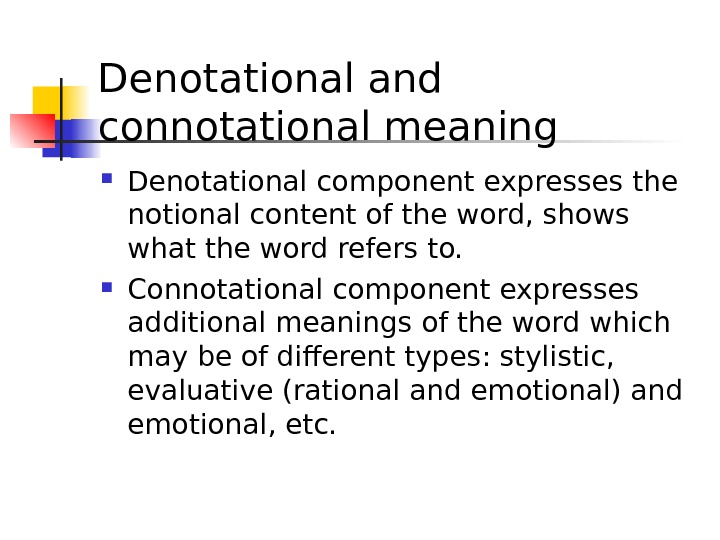


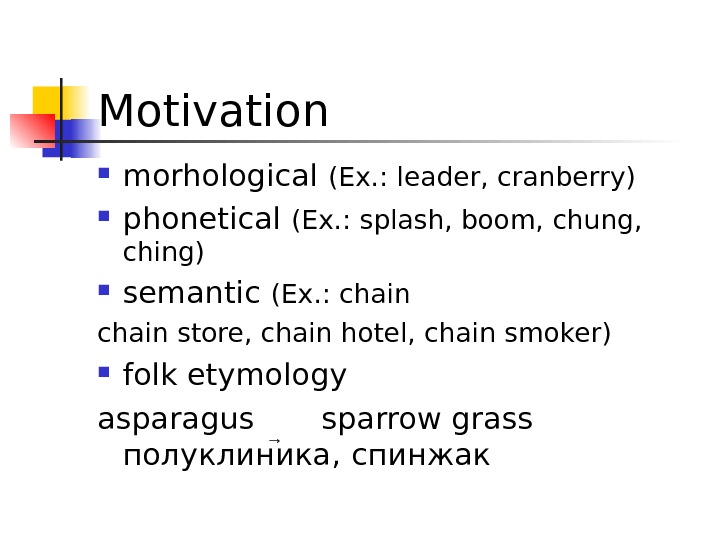

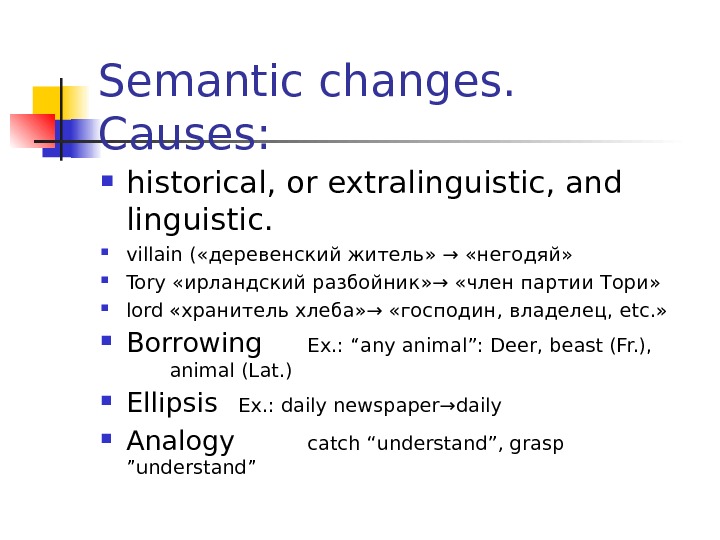
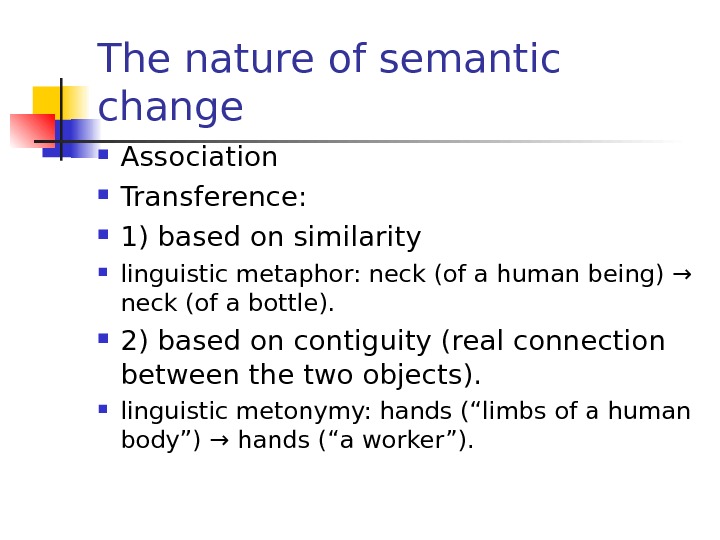
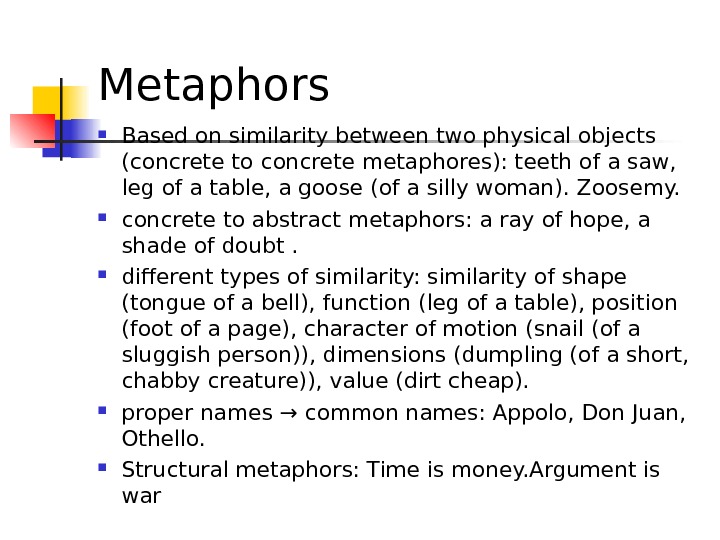



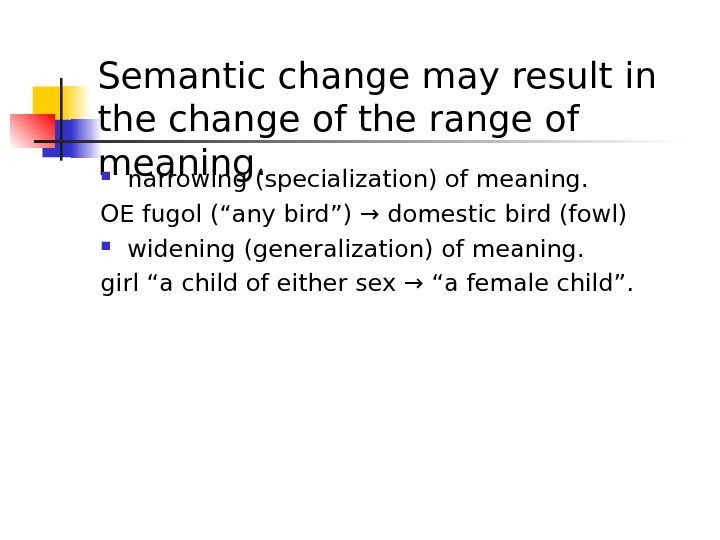
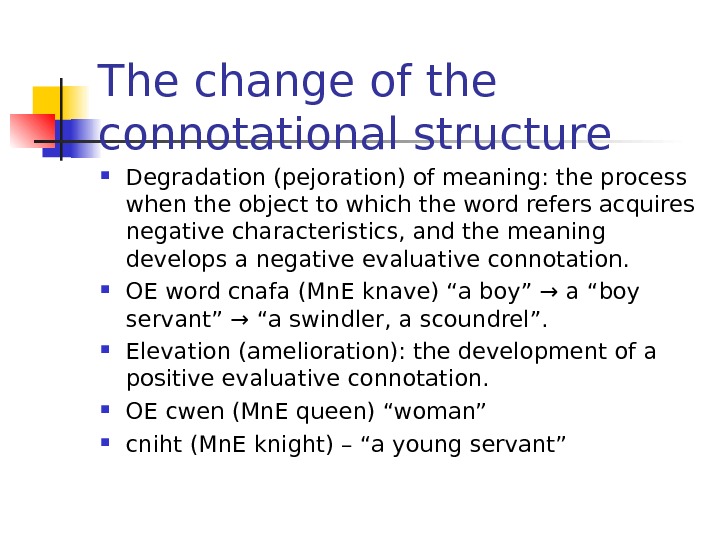











![Meaning and Sound-formare not identical
different
EX. dove - [dΛv]... Meaning and Sound-formare not identical
different
EX. dove - [dΛv]...](https://documents.infourok.ru/2d0c9b9d-1c12-4da2-8c1e-80496902c301/slide_10.jpg)









































